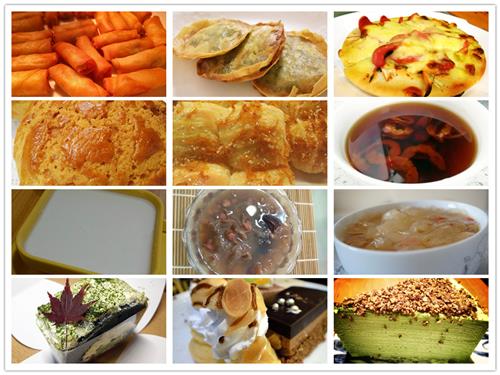A long-term balanced diet can control blood glucose and blood lipids, and a reasonable combination of nutrients can reduce pancreatic β-cell burden and prevent the occurrence and development of complications. But patients with diabetes often claim to eat less. How much do they eat less? What is the bottom line for diabetics to eat less?
First, the staple food, the bottom line of cereals
The intake of staple foods for three meals is not less than 3, that is, the carbohydrate in the food for the whole day is not less than 130 grams.
It is often recommended that diabetics have dietary control. The staple food is an important aspect. The main ingredient of the staple food is carbohydrates, which are the main substances for blood sugar production. The reason why it is recommended to eat less is to help reduce blood sugar. However, when the intake of carbohydrates is insufficient, the lack of energy as the main energy source requires the body to mobilize fat and protein for energy supply, which can easily cause ketosis. Carbohydrates also constitute an important component of body tissues. In addition, the central nervous system can only rely on carbohydrates for energy. Therefore, the intake of staple food should not be less than 3, that is, the carbohydrate in the food throughout the day should not be less than 130 grams.
It is recommended that the intake of staple food of diabetic patients accounts for 50%-60% of the total energy of the whole day, and the staple food for the whole day is 200-300g. Individualized patients should be noted, such as age, exercise capacity, and weight.
Second, the bottom line of non-staple food intake is 120 grams. That is, protein intake throughout the day is not less than 30 grams.
Inadequate protein intake, the patient tends to lose weight, weakened immunity, easy infection, poor wound healing, severe increase in blood nitrogen containing metabolic waste, increased urinary urea nitrogen and organic acid concentrations, interfere with water and acid-base balance, increase dehydration And acidosis.
When the protein supply is close to normal, it is 0.8 to 1.2 g/(kg·d), which is 10% to 20% of the total energy. When patients with renal insufficiency, the protein intake should be strictly limited, depending on the degree of renal function damage, usually 0.5 to 0.8 g / (kg d). That is, daily animal food intake is 125-225 grams.

Third, the bottom line of edible oil, fat
The total fat should not be less than 13 grams, which is 15% of the total energy. Animal fats and trans fatty acids can not be eaten, polyunsaturated fatty acids should be at least 3 grams. It is 3% of the total energy.
Fat is a component of the cell membrane, providing essential fatty acids, fat-soluble vitamins, and promoting its digestion and absorption. Ingestion should not be too low. General dietary fat accounts for 20% to 30% of total energy, of which saturated fatty acids account for less than 10% of total energy. Avoid eating foods rich in cholesterol, such as animal brains, liver, kidneys, intestines and other internal organs, fish seeds, shrimp seeds, egg yolk and other foods. The choice of edible oil should be based on the selection of oils rich in monounsaturated and polyunsaturated fatty acids, such as olive oil, camellia oil, perilla oil, and flaxseed oil.
Fourth, the minimum vegetable 500 grams (a pound)!
Diabetic patients are limited by the intake of staple foods and fruits, and their metabolism is relatively vigorous, and vitamin deficiency is more likely to occur. Vegetables are a good source of vitamins such as vitamin C, vitamin A, and beta-carotene. They are also rich in dietary fiber, minerals, and phytochemicals. Since vegetables provide a small amount of energy and carbohydrates, it is not necessary to limit the intake of vegetables. The daily intake of vegetables is preferably about 500 grams, but when eating root vegetables such as potatoes, potatoes, yams, etc., it should be appropriate. Reduce the intake of staple foods.
Diabetic patients with non-hyperglycemic emergencies do not recommend very low energy diets (3347. 2 KJ/d (<800 kcal/d)). A long-term, low-energy diet is unfavorable to the recovery of the disease. The following food intake can be referred to.
One egg bag of milk
Two two lean meat fish is better
Three two tofu nutritious
Four or two fruit control eat less
The weight of the two staple foods
Sixty-two vegetables appropriate to eat more
Seventy-eight is best
There are many kinds of raw materials and different properties of cosmetics. According to the properties and uses of raw materials, cosmetics can be generally divided into two categories: substrate raw materials and auxiliary raw materials.
The former is a kind of main raw material of cosmetics, which occupies a large proportion in the formula of cosmetics, and is the substance that plays the main function in cosmetics. The latter are responsible for forming, stabilizing or giving color, fragrance and other properties of cosmetics, which are used in small amounts in cosmetic formulations but are extremely important. Cosmetics are chemical mixtures made from natural, synthetic or extracted substances with different functions, which are processed by heating, stirring and emulsifying.
Cosmetic Ingredients ,Sodium Hyaluronate Powder,Kojic Acid Dipalmitate,Ursolic Acid Powder
Xi'an Double H Health Technology Co., Ltd , https://www.dhextract.com